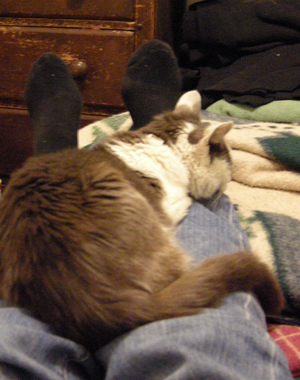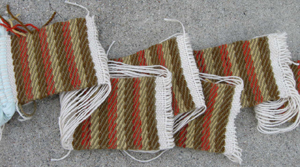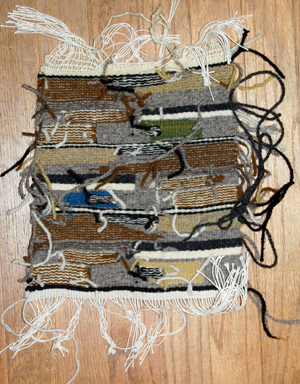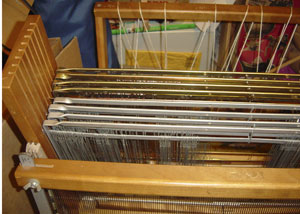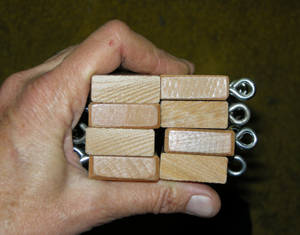I’m not sure if this really qualifies as experiment. I only had a small amount of dye material to try out and am not sure when it will be available again.
Earlier this fall I was gifted with a shoe box of prickly pear fruit. This is not something I have access to locally so I haven’t had much experience using it as dye but I’m told one can get interesting colors – pink to rose, oranges.

[Cactus fruit in sand to remove spines.]
Safety Note: Cacti have SPINES. Handle with care and all that. As suggested by Las Arañas Spinners and Weavers Guild, roll the fruit around in sand to remove the spines.
The fruit should be gathered and used fresh. Mine had sat around for awhile so this no doubt had an effect on the resulting color. For the percentage of dye stuff to fiber, I have read other people’s descriptions using 2:1 or 4:1 As it turned out my shoe box was a bit over 1 lb. I used this with 1 oz wool, scoured and pre-bathed with Alum.
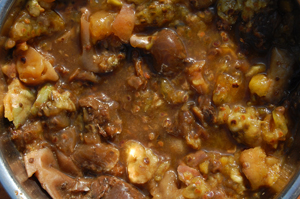
Chopped up and mashed up the cactus fruit, strained it out, and added enough water to cover the wool. Added in the wool and cactus fruit (tied up in mesh).

From what I’ve read you don’t want to boil this. Boiling will lose the color and result in tan. Rather than cooking or boiling let it sit for a week or two and ferment.
If you are living in an area where Prickly Pear Cactus grows locally I’m guessing the weather is probably warm. The pot can sit outside for a week or two and ferment with no trouble.
Aside from not being fresh, I tried this a bit late in the season when the nights were getting colder. But I did leave it to sit for three weeks with daily sloshing and gentle stirring to distribute the liquid. What I got was a nice shade of light orange.

I haven’t had the chance to do a fade test so I can’t say how this color will hold up.
Books that mention dye from cactus fruit:
Dyeing with natural materials/Las Arañas Spinners and Weavers Guild, Inc.
Navajo native dyes: their Preparation and use/Nonabah G. Bryan
Nature’s colors: dyes from plants/Ida Grae
Powered by ScribeFire.
